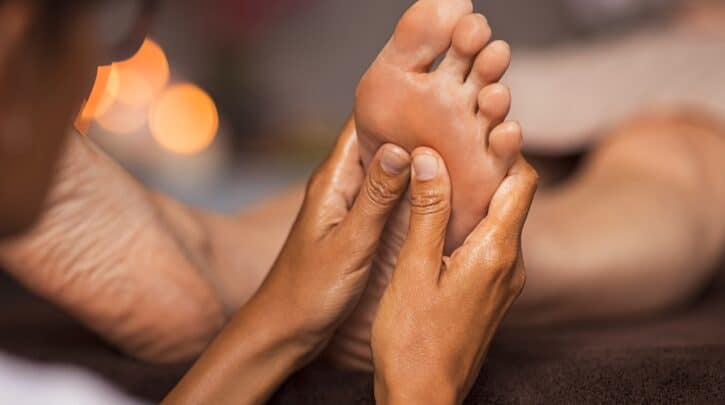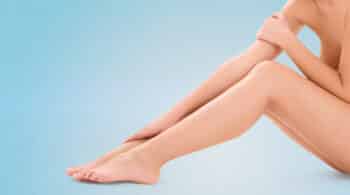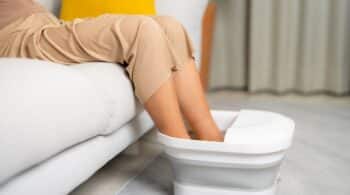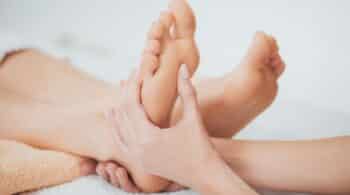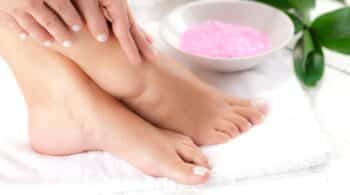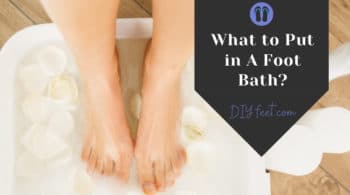This is the Ultimate Guide to Foot Relaxation Techniques! In this comprehensive guide, you will learn all about the importance of foot relaxation techniques and the numerous benefits they offer.
The importance of foot relaxation techniques
Many of us tend to neglect our feet, even though they carry the weight of our entire body. By incorporating foot relaxation techniques into your self-care routine, you can help relieve stress, improve circulation, and promote overall well-being.
Foot relaxation techniques can be especially beneficial for those who spend long hours on their feet or suffer from foot-related issues such as plantar fasciitis or arthritis. Through these techniques, you can alleviate tension, reduce pain, and enhance the flexibility and strength of your feet.
Benefits of foot relaxation techniques
There are numerous benefits that you can gain from incorporating foot relaxation techniques into your daily life. Firstly, these techniques can help relax both your mind and body, promoting a sense of deep relaxation and stress relief. Additionally, they can improve blood circulation, reducing swelling and aiding in the natural healing process.
Moreover, foot relaxation techniques can provide relief from foot and ankle pain, enhancing your overall comfort and mobility. They can also stimulate reflexology points, which are believed to correspond to different organs and promote overall well-being.
So, if you are ready to embark on a journey to ultimate foot relaxation, let’s dive into the various techniques that will bring you the relaxation and rejuvenation you deserve!
Foot Reflexology
In this section, we will explore the fascinating world of foot reflexology. Foot reflexology is a therapeutic practice that involves applying pressure to specific points on the feet to stimulate healing and relaxation throughout the body. It is based on the theory that these points, also known as reflex zones, correspond to different organs and systems in the body.
Understanding foot reflexology
Foot reflexology is rooted in ancient practices from China, Egypt, and other civilizations. By understanding the map of reflex zones on the feet, you can target specific areas to promote overall wellness. The theory suggests that the feet are microcosms of the whole body, with each point representing a particular organ or system.
Techniques used in foot reflexology
There are various techniques used in foot reflexology, including thumb and finger pressure, kneading, and stretching. A skilled reflexologist applies gentle pressure to these reflex zones to release tension and restore balance. Additionally, they may use tools like wooden sticks or foot rollers to enhance the massage.
Effects and benefits of foot reflexology
Foot reflexology offers a range of benefits, including relaxation, stress reduction, improved circulation, pain relief, and enhanced overall well-being. It can alleviate common ailments such as headaches, digestive issues, and insomnia. Regular foot reflexology sessions can help promote a healthier body and mind.
Whether you are looking for relaxation or therapeutic benefits, foot reflexology can be a valuable addition to your self-care routine. So, put your feet up, take a deep breath, and embark on a journey to discover the wonders of foot relaxation techniques.
Massage Techniques
Different massage techniques for foot relaxation
When it comes to foot relaxation, there are various massage techniques you can try. Each technique targets different areas of the foot to provide relief and relaxation. Let’s explore a few popular ones.
Step-by-step guide to foot massage
To perform a foot massage, start by soaking your feet in warm water for about 10 minutes to relax the muscles. Next, dry your feet and sit in a comfortable position. Begin by applying a small amount of massage oil or lotion to your hands to prevent friction.
Starting at the heel, use your thumbs to apply gentle pressure and glide along the arch of the foot towards the toes. Gradually increase the pressure as you move upwards. Don’t forget to massage the toes, paying attention to each one individually. Repeat these movements for the other foot.
Benefits of foot massage
Foot massage offers numerous benefits, including stress relief, improved circulation, reduced foot pain, and enhanced overall well-being. The massage helps relax tired muscles, reducing tension and promoting relaxation. It also stimulates blood flow, aiding in the delivery of oxygen and nutrients to the feet.
Regular foot massages can alleviate foot pain caused by conditions like plantar fasciitis and provide relief from the discomfort of standing or walking for extended periods.
Massage techniques are a wonderful way to relax and pamper your feet. Incorporate foot massages into your self-care routine and experience the revitalizing benefits they offer.
Acupressure Points
Exploring acupressure points on the feet can be a highly effective way to achieve foot relaxation and relieve stress. Acupressure, an ancient healing technique that originated in China, focuses on stimulating specific points on the body to promote balance and healing. In the case of foot relaxation, these pressure points can help release tension, reduce pain, and improve overall wellbeing.
Top Acupressure Points for Foot Relaxation
There are several key acupressure points on the feet that can provide relief and enhance relaxation. The first point is the Tai Chong, located on the top of the foot, in the depression between the big toe and the second toe. By applying pressure to this point, you can alleviate foot cramps and reduce lower back pain.
Another effective point is the Yong Quan, located at the center of the sole, also known as the Kidney 1. Stimulating this point can relieve fatigue, improve sleep quality, and enhance overall vitality. Additionally, the Zu San Li point, found on the top of the foot in the depression below the knuckles of the outer ankle, can boost the immune system, alleviate digestive issues, and reduce stress.
How to Stimulate These Acupressure Points
To stimulate these acupressure points, you can use your fingers or a small massage tool. Apply gentle, steady pressure to the desired point using circular motions. Start with light pressure and gradually increase it to a comfortable level. It is recommended to hold the pressure for 30 seconds or until you feel a release of tension. Repeat the process on each foot for maximum benefit.
Incorporating acupressure into your foot relaxation routine can significantly enhance the effectiveness and therapeutic benefits. By targeting these specific pressure points, you can experience relief from various foot ailments and achieve a deep sense of relaxation. So, take some time for yourself, prioritize foot relaxation, and indulge in the soothing benefits of acupressure.
Aromatherapy for Foot Relaxation
Imagine coming home after a long, tiring day, and being able to unwind and relax your entire body from the comfort of your own home. Aromatherapy for foot relaxation is a popular technique that can help you achieve just that. By using essential oils, you can create a soothing and tranquil environment that will promote relaxation and rejuvenation.
Benefits of using essential oils for foot relaxation
Using essential oils during foot relaxation can provide a wide range of benefits. These oils possess natural properties that can help to reduce stress, relieve muscle tension, and promote overall well-being. By incorporating aromatherapy into your relaxation routine, you can experience increased relaxation, improved sleep quality, and enhanced mood.
Popular essential oils for foot relaxation
Several essential oils are well-known for their relaxing properties. Lavender oil is particularly popular, thanks to its calming and soothing effects. Peppermint oil is another popular choice, known for its refreshing and cooling properties. Eucalyptus oil, with its invigorating scent, can also provide a sense of relief and relaxation during foot relaxation.
Methods of incorporating aromatherapy in foot relaxation
There are various ways to incorporate aromatherapy into your foot relaxation routine. One popular method is to add a few drops of your chosen essential oil to a carrier oil, such as jojoba or sweet almond oil, and massage it into your feet. Another option is to use a diffuser, allowing the scent of the essential oil to fill the air and create a calming atmosphere. Additionally, you can create your own foot soak by adding a few drops of essential oil to warm water and allowing your feet to soak for a few minutes.
With the numerous benefits and methods available, incorporating aromatherapy into your foot relaxation routine can be a game-changer in terms of relaxation and well-being. Choose your favorite essential oil, try different methods, and discover the power of aromatherapy for foot relaxation.
Hot and Cold Therapy
One popular and effective technique for foot relaxation is hot and cold therapy. Applying hot and cold temperatures to your feet can help relieve tension, reduce inflammation, and promote relaxation. This section will discuss how to apply hot and cold therapy for foot relaxation, the benefits of contrast hydrotherapy for the feet, and provide tips for using this technique effectively.
Applying hot and cold therapy for foot relaxation
To begin your foot relaxation journey, start by soaking your feet in a basin of warm water for about 10-15 minutes. The warm water helps to relax the muscles and improve circulation in the feet. After soaking, transition to a basin of cold water and soak your feet for about 1-2 minutes. Alternating between hot and cold water increases blood flow, stimulates the nervous system, and promotes healing. Repeat this cycle a few times, ending with cold water.
Benefits of contrast hydrotherapy for the feet
Contrast hydrotherapy, the alternating application of hot and cold therapy, offers numerous benefits for foot relaxation. It helps to reduce muscle fatigue, relieve pain and swelling, and promote overall foot health. The contrast in temperature stimulates the blood vessels, increasing circulation and reducing inflammation. This technique can also aid in the recovery of foot injuries and conditions such as plantar fasciitis or Achilles tendonitis.
Tips for using hot and cold therapy effectively
To maximize the benefits of hot and cold therapy for foot relaxation, consider these helpful tips:
- Use water that is comfortably warm and cold, not extremely hot or cold.
- Always start and end with cold water to promote circulation.
- Maintain a balanced temperature contrast between hot and cold water.
- Listen to your body and adjust the duration of hot and cold soaks based on your comfort level.
- Follow up with a gentle foot massage or stretching exercises to enhance relaxation.
Now that you have a good understanding of hot and cold therapy for foot relaxation, you can start incorporating this technique into your self-care routine. Remember to prioritize your foot health and pamper your feet with the rejuvenating benefits of temperature therapy.
Stretching and Exercises
One of the most effective ways to achieve foot relaxation is through regular stretching and exercises. By incorporating these techniques into your daily routine, you can relieve tension, improve flexibility, and strengthen the muscles in your feet. In this section, we will explore various stretching and exercise techniques that can help you relax your feet.
Stretching exercises to relax the feet
Stretching is a fundamental technique to loosen tight muscles and promote relaxation in your feet. Start by sitting on the floor with your legs extended in front of you. Use your hands to grab your toes and gently pull them towards you, feeling a stretch in the arches of your feet. Hold this position for 15-30 seconds and repeat 2-3 times. Another effective stretch is the calf stretch, where you place your hands on a wall, step one foot back, and press the heel down to stretch the calf muscle.
Foot strengthening exercises for relaxation
Strengthening the muscles in your feet can improve stability and promote relaxation. A great exercise to achieve this is toe curls. Simply place a small towel on the floor, and use your toes to gather the towel towards you. Repeat this motion for 10-15 times on each foot. Another effective exercise is the toe spread, where you place your feet flat on the floor and slowly spread your toes apart as wide as possible. Hold this position for a few seconds, then relax. Repeat this exercise 10 times.
Additional exercises to improve foot flexibility
In addition to stretching and strengthening exercises, there are other techniques that can enhance foot relaxation. One such exercise is foot rolling. Using a tennis ball or a frozen water bottle, roll it under your foot, applying gentle pressure. This helps to massage the muscles and release tension. Another useful technique is the marble pickup exercise. Place a small bowl of marbles on the floor and use your toes to pick up each marble and drop it into another bowl. This exercise not only enhances foot flexibility but also improves coordination.
By incorporating these stretching and exercise techniques into your daily routine, you can experience the ultimate relaxation for your feet. Remember to start slowly and gradually increase the intensity and duration of each exercise. Consistency is key, so make it a habit to prioritize foot relaxation in your daily self-care routine. Your feet will thank you for it with improved flexibility, reduced pain, and a sense of overall well-being.
Conclusion of Foot Relaxation Techniques
In conclusion, this ultimate guide to foot relaxation techniques has provided you with a comprehensive overview of various methods that can help you relax and rejuvenate your feet. By incorporating these techniques into your daily life, you can experience numerous benefits for both your physical and mental well-being.
Summary of Foot Relaxation Techniques
Throughout this guide, we have explored several effective foot relaxation techniques. These include foot massages, warm water soaks, reflexology, and acupressure. Each of these techniques offers unique benefits such as pain relief, stress reduction, improved blood circulation, and enhanced sleep quality. Whether you choose to pamper yourself with a foot massage or stimulate specific pressure points through reflexology, there is a technique that will suit your individual needs and preferences.
Importance of Incorporating Foot Relaxation in Daily Life
Incorporating foot relaxation techniques into your daily routine can have a profound impact on your overall well-being. Engaging in these practices can help alleviate common foot problems such as plantar fasciitis, flat feet, and general foot fatigue. Additionally, foot relaxation techniques promote relaxation throughout the entire body, relieve tension, and reduce stress levels. By taking care of your feet, you are also taking care of your entire body.
In conclusion, as you prioritize foot relaxation techniques in your daily life, you can reap the rewards of improved physical comfort and enhanced mental well-being. So why wait? Start incorporating these techniques today and give your hardworking feet the care and relaxation they deserve.

